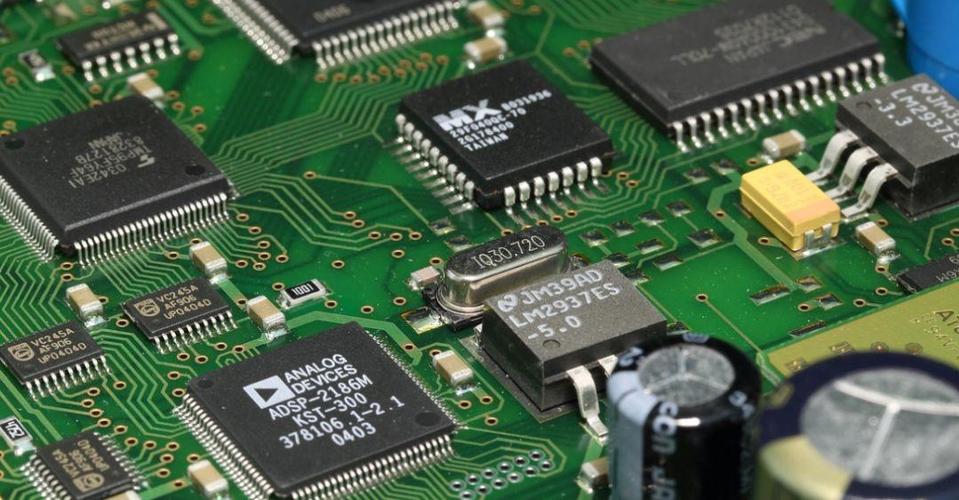EMC electromagnetic shielding materials and design guidelines

EMC test
The current norms and standards set the limit value of the electric field intensity radiated by the product at 3m, 10m or 30m. In order to see whether the EMC test equipment meets these standards, a large enough field is needed that can provide the corresponding distance between the DUT and the antenna. The background electromagnetic energy of the EMC test site is much lower than the EMC test range.
The state of the equipment to be tested by EMC must be the same as the actual use state, and the I/O interface is connected with appropriate peripherals. The system under test should be placed on the turntable so that the maximum radiation signal can be found by rotating. The turntable and the antenna are placed on the same ground. In this way, the radiation when the system is working can be measured.
This kind of test can also be carried out in a semi-reflective chamber, but the size and cost of a suitable test chamber are considerable. Most radiation tests are conducted in an open field. The open field is carefully selected. The electromagnetic background is very low and there are no reflectors around, such as buildings.
In order to obtain the shielding effectiveness of different materials, some other test methods are used. The shielding box is one of the first methods developed. The device for placing the receiving antenna in the sealed shielding box is shown in Figure 1-5. There is a square opening in this box. Place it in a shielded room to minimize external interference. There are signal generators and transmitting antennas in the shielded room. The sample of the material to be tested is firmly clamped on the opening of the box, and the field strength at the transmitting antenna and the field strength at the receiving antenna are recorded. The shielding effectiveness of this material is the ratio of the two values. Pure copper plates can be used as reference values. The four shielded room devices shown in Figure 1-6 can be used to improve the measurement accuracy and broaden the frequency range of the measurement.
Theoretical method of shielding
The theory of electromagnetic waves is a classic theory. Maxwell, Faraday, and others established basic equations describing electric and magnetic fields before electronics. However, these equations can hardly be directly applied to complex hardware in practice. The attenuation of electric and magnetic fields can be better expressed by the equations obtained from experiments, and these equations are widely used in shielding design.
There are many factors that affect the field around the source of electromagnetic energy. The type of source gives the field some characteristics, such as the radiation amplitude. The distance from the source and the characteristics of the electromagnetic wave transmission medium will affect the interaction between the field and the shield.
In electromagnetic shielding, the wave impedance Zw is a useful concept linking these parameters. The wave impedance is defined as the ratio of the electric field E to the magnetic field H.
The driving voltage on the source determines the characteristics of the interference. For example, the current flowing in the loop antenna corresponds to a lower driving voltage. The result is a smaller electric field and a larger magnetic field in the vicinity of the antenna, with lower wave impedance. On the other hand, at a quarter-wavelength distance, the impedance of all source waves approaches the characteristic impedance of free space, 377 ohms. At this time, it is called a plane wave, and as a reference, the wavelength of 1MHz is 300m.
According to the distance to the source, electromagnetic waves can be further divided into two types, near-field and far-field. The boundary between the two fields is based on the wavelength λ divided by the distance of 2π as the boundary point. The area near λ/2π is called the transition zone. The source and the transition zone are the near field, and the point beyond this is the far field. The characteristics of the near-field waves are mainly determined by the source characteristics, while the characteristics of the far-field waves are determined by the propagation medium. If the source is high current, low voltage. The near field is dominated by magnetic field waves. A high-voltage, low-current source generates waves dominated by electric fields.
This concept is very useful when designing shielding to control radiation. At this time, the distance between the shielding shell and the source is usually on the order of centimeters, which is relatively close to the case of shielding electromagnetic waves. In the far field, both electric and magnetic fields become plane waves, that is, the wave impedance is equal to the characteristic impedance of free space.
Knowing the near-field wave impedance of interference radiation is very useful for designing control methods. The high permeability ferromagnetic material that can shunt magnetic flux can shield low impedance waves below 200KHz. Conversely, high-conductivity metal that can short-circuit the electric vector in electromagnetic waves can shield electric field waves and plane waves. The greater the difference between the wave impedance of the incident wave and the surface impedance of the shield, the more energy the shield reflects. Therefore, a thin copper sheet with high conductivity has little effect on low impedance waves.
The above is the introduction of EMC electromagnetic shielding materials and design guidelines in PCB design. Ipcb is also provided to PCB manufacturers and PCB manufacturing technology.